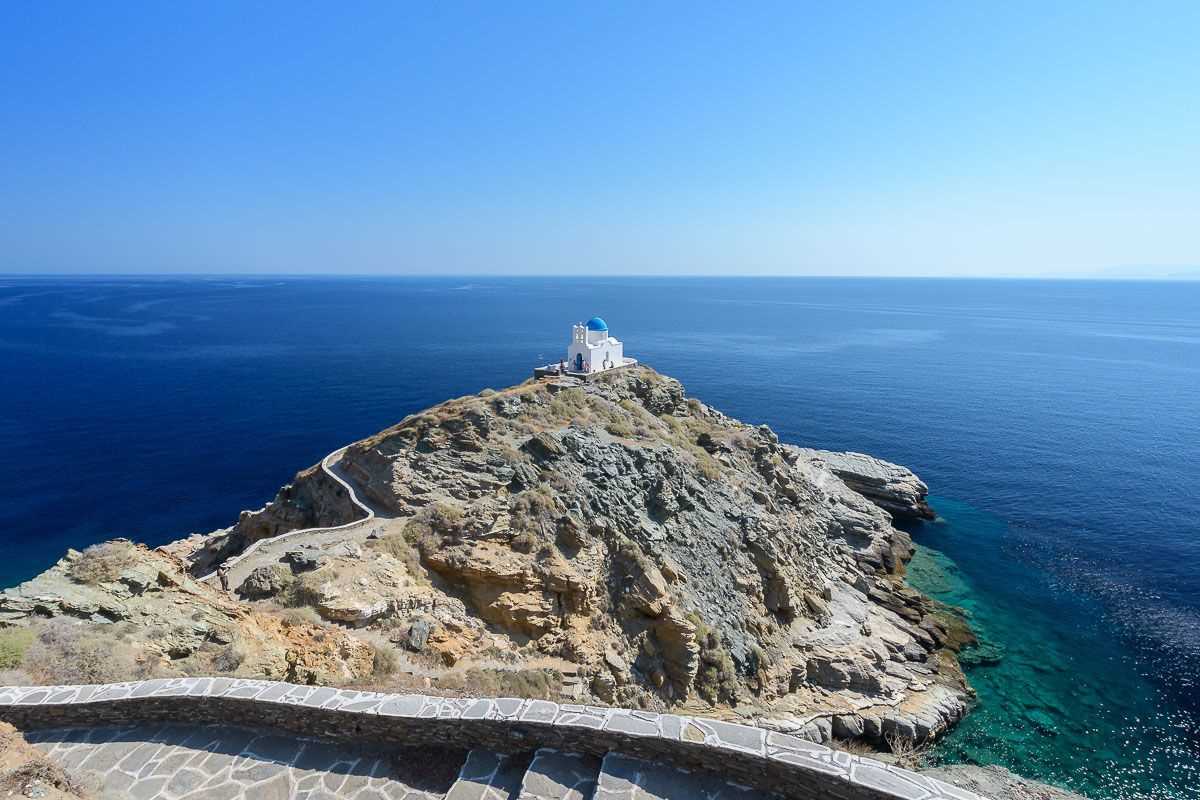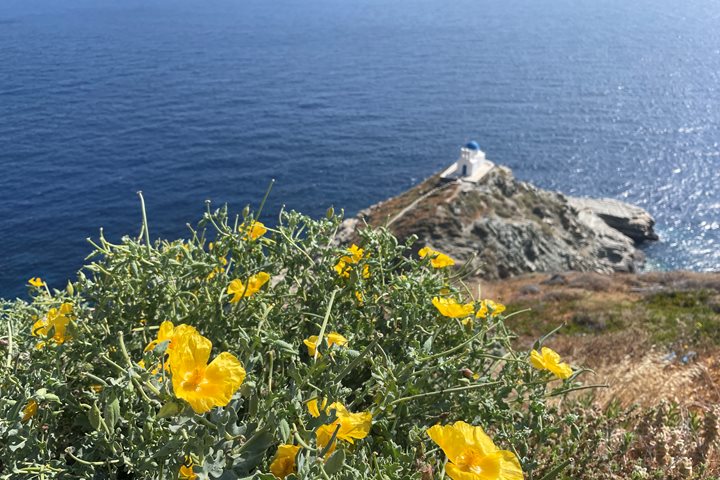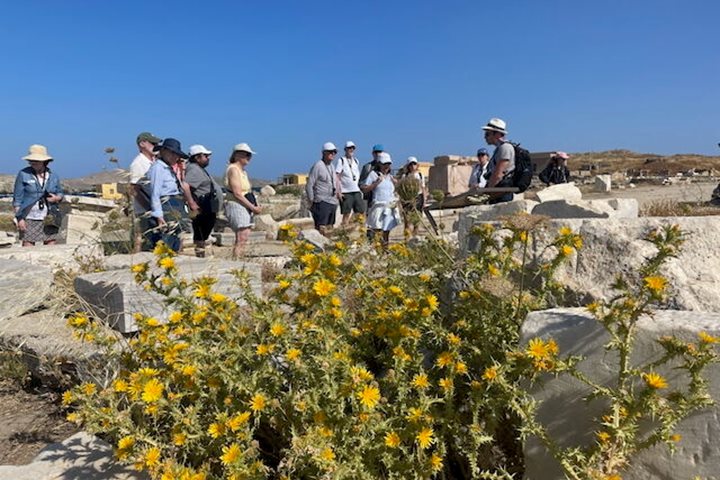After yesterday’s lively evening on Naxos, we returned to a more peaceful Cycladic scene with a morning visit to the island of Sifnos.
We began our day by journeying inland, passing ancient terraces and silvery-green olive groves to reach the hilltop stronghold of Kastro. This town was once the island’s capital and takes its name from the 14th century Venetian fortress that forms the basis of the town today. Archaeological excavations, however, have revealed that this coveted location, with sweeping views of the surrounding seas, was inhabited since the Early Bronze Age (around 2800 B.C.). Some of us braved the winding path downward to visit the charming Church of the Seven Martyrs (Eftamartyrios), a tiny post-Byzantine chapel on a rocky outcropping bounded by stunning turquoise waters. Venturing back toward the port, some opted for a swim at the beach of Kamares, with a view of the Sea Cloud anchored in the bay. The sparkling sand of this beach hinted at the rich mining history of the island, which in the ancient world was known for its gold and silver.
We returned to the ship for lunch and a relaxing afternoon of sailing. Setting all sails to achieve a leisurely pace of one or two knots in the light afternoon breeze, we gathered on the lido deck for a fascinating lecture by Dr. Michael Cosmopoulos, a National Geographic specialist. Carefully guiding us through several centuries of history, Michael explained how the ancient Greeks have had a profound influence on such diverse fields as philosophy, medicine, science, and theater, to name but a few. After the lecture, we continued pondering the complexities of Greek history while indulging in custom-made chocolate or caramel crepes, expertly prepared by Romel, the ship’s baker.
Later in the evening our dinner on deck was briefly interrupted by dolphins leaping alongside the ship as we concluded another fascinating day of exploring the Greek Islands.









